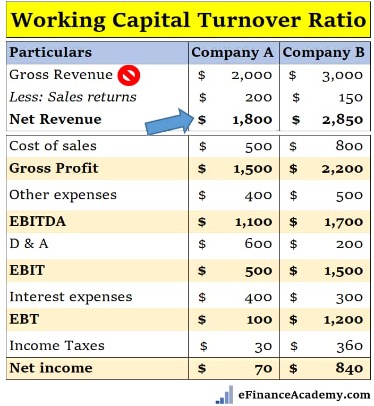
The form must be filed only after the IRS accepts the election of an S corporation filed by a business with fewer than 100 shareholders. The form may be prepared by a member of the corporation or a tax professional and must be filed electronically or by mail. Some S corporations, especially those with more complicated tax situations, may choose to have their annual tax returns completed by a professional, such as a tax preparer or an accountant. Having a tax professional complete and submit these forms reduces (or eliminates) the likelihood of error.
Green tax and ESG tax credits: What accountants need to know
As a pass-through entity, LLC owners also have tax benefits due to the Tax Cuts and Jobs Act, just as S corp owners do. Partnerships, corporations, and nonresident aliens cannot qualify as eligible shareholders. Schedule D is where you’ll report any capital gains or losses your S corporation sustained this year (i.e. money it made buying or selling stocks, bonds and other assets).

Find out what tax forms S corporations are required to file with the IRS.

By default, a corporation—other than an LLC—in the U.S. is a C corporation. Once you have established your company as a C corporation, you can then file an option to be taxed as an S corporation, which means that tax obligations pass through to the owners’ personal tax reporting. Our recommendation is to chat with a CPA or tax professional in your state to make sure you’re following your state’s S corporation audit sampling definition rules. If you’re a Bench Premium customer, you’ll also have access to on-demand and unlimited tax consultations with tax professionals who can help you ensure you’re compliant. All employers must file Form 941 to report the income and payroll taxes they withheld from their employees’ earnings in a given tax year. This form also reports on the employer’s share of Social Security and Medicare taxes.
Quarterly payroll tax return deadlines
To file your FUTA return, complete and submit Form 940 to the IRS and pay all taxes due. In addition to your employer’s quarterly taxes, employers must file and pay a Federal Unemployment Tax (FUTA). The IRS uses this tax money to provide funds for federal unemployment compensation insurance and to supplement state unemployment insurance and tax systems. To file your quarterly employer’s taxes, you’ll need to submit a completed Form 941 to the IRS and pay all taxes due. Get unlimited tax advice right on your screen from live experts as you do your taxes.
Setting Up An Account

And you’ll probably need an accountant to prepare your S-corp tax return. It’s always a good idea to go over your situation with a tax professional before you make a decision. One of the key features of an S-corporation election for a corporation https://www.business-accounting.net/what-is-the-cost-principle/ is pass-through taxation. While C-corps are subject to “double taxation” where distributions to shareholders are taxed twice, S-corps are not subject to corporate income tax, so distributions are only taxed once—when received by shareholders.
What constitutes “reasonable” can often be a gray area, but if you push the envelope too far, you put yourself at risk for an IRS audit and potentially penalties and interest on any back taxes assessed by the IRS. Copies of tax returns are exact replicas of your tax return and all the attached forms you submitted. In most cases, you will need a transcript rather than a copy of your tax return. But you may need a copy of your tax return for other reasons, like filing an amended tax return. If you don’t file your tax return by the deadline (and haven’t filed for an extension), the penalty is 5% of the tax due for each month that return is late.
- Some states fully recognize S-corps, while others treat them as C-corps or impose additional eligibility or filing requirements.
- The combined employee and employer portions of this tax amount normally amounts to 15.3 percent.
- While S-corps and C-corps are usually not any different under state corporation laws, the important differences lie in federal taxation.
- Although they are largely exempt from corporate taxes, S corporations must still report their earnings to the federal government and file tax returns.
- Your Schedule K-1 will dictate how to allocate distributions, and those who receive distributions must report that on Schedule E of their personal income tax return.
Individuals, including sole proprietors, partners, and S corporation shareholders, generally use Form 1040-ES, to figure estimated tax. If you receive salaries and wages, you can avoid having to pay estimated tax by asking your employer to withhold more tax from your earnings. There is a special line on Form W-4 for you to enter the additional amount you want your employer to withhold. Corporations generally have to make estimated tax payments if they expect to owe tax of $500 or more when their return is filed.
Both S corps and LLCs are known as pass-through entities because they pay no corporate taxes. Instead, they pay their shareholders, who become responsible for the taxes due. If you’re electing S corp status as a C corporation, https://www.online-accounting.net/ you must submit Form 2553, Election by a Small Business Corporation to the IRS, signed by all of your company’s shareholders. One of the first things your tax professional will ask for are financial statements.
And if you’ve decided to become an S corp, we’ve got a guide to the forms you need to fill out. If you’re a new and growing business and intend to reinvest most of your profits back into the business, on the other hand, sticking to C corporation status can leave you with a lower tax bill. If you’re electing S corp status as an LLC, you’ll need to file Form 2553, Election by a Small Business Corporation. S corporations use Form 1120-S to report income, losses, credits, and deductions. It loosely resembles the C corporation return, Form 1120, so make sure you download the correct one.
Hiring a full-time accountant for the business is of course an option too—and their salary is tax-deductible. S corporations are required to file their annual tax return by the 15th day of the 3rd month after the end of the tax year. Use Form 1120-S to report the income, gains, losses, deductions, credits, etc., of a domestic corporation or other entity for any tax year covered by an election to be an S corporation. You may send estimated tax payments with Form 1040-ES by mail, or you can pay online, by phone or from your mobile device using the IRS2Go app. You can also make your estimated tax payments through your online account, where you can see your payment history and other tax records. For additional information, refer to Publication 505, Tax Withholding and Estimated Tax.
If the LLC elects S-corp status, the owners can be company employees, paying employment taxes on their reasonable salary but not on the business’s total profits. Every entity must report its tax liabilities by filing a tax return each year with the IRS. These businesses have fewer than 100 shareholders and pass their income and losses to each shareholder. Companies can file these forms electronically or by mail and must include Schedule K-1 with their returns. All paperwork must be submitted to the IRS by the 15th of the third month after the end of the corporation’s tax year. The level of intricacy in corporate tax return filing requirements, coupled with frequent changes in tax laws, makes the job of accurately filing corporate taxes time-consuming and complicated.